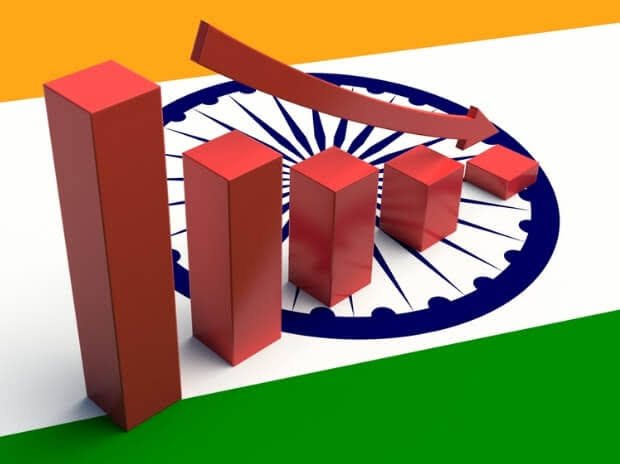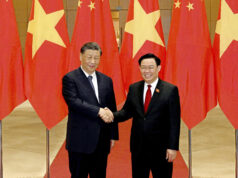India Slowdown

A balanced viewpoint
Here’s a balanced article written by Vipin Gupta, IIM (A). Currently the MD of Boston Consulting Group on the Indian Economy and path forward.
India’s GDP growth rate decelerated to a more than five-year low at 5% in the June quarter of 2019-20, against 5.8% in the March quarter. Depending upon which side of the ideological divide you are on, you either curse Modi or look for alternative bugbears. Here is my take on the slowdown.
The first 5 years of Modi Government saw some really transformational steps in the Indian economy. Demonetisation, GST, RERA, NCLT all came in the Modi first term.
1. Demonetisation doesn’t have too many votaries now, but it clearly gave the corrupt politician/ businessman/ babu a hard tonk on the head. All of a sudden, cash in the mattress was no longer a great asset. GST’s long awaited (flawed?) implementation meant that a shift from the informal to the formal sector is well underway. Large companies are increasingly buying their supplies from GST compliant vendors to avail Input Tax Credit. As a consequence, a large number of MSMEs, who flourished only because of tax evasion and/ or underhand cash dealings have suddenly found their business models unviable. If anecdotally corruption has gone down in the Modi regime, purchase of property and other high value luxury items will automatically take a beating.
2. The real estate industry is going through its own churn and consolidation in the hands of a few large corporate players. RERA implementation has meant that a lot of Tier II and Tier III builders have been forced to shut shop. Taking upfront advances from gullible customers, launching new projects without completing older ones, moving money for one project to another and delaying deliveries interminably has its own set of penalties under RERA. Some big names of the industry are either in jail or out on bail. All this has meant, considerable slowdown in the construction sector activity. Since property prices have stayed flat to down in most areas in the last 5 years, speculative and benami investments in real estate have also reduced sharply benefiting genuine first-time home buyers.
3. A lot of UPA I & UPA II growth was fuelled by reckless PSU Bank loans to crony capitalists, who either mis-allocated capital to unviable projects or simply siphoned away money to their personal companies. Now with the fear of NCLT, the choice for Indian industry is clear. Either reduce leverage or risk losing your crown jewels and/or go to jail. Could you have imagined pre 2014 that Essar Oil would one day be sold, Essar Steel would be up for sale and that ADA Group would be selling its prized assets in a race to avert bankruptcy? Emphasis on deleveraging has meant that Indian private sector has had little appetite for fresh investments in recent times. If it were not for robust FDI inflows in the last couple of years, we would have been in even deeper shit.
4. PSU Banks have been forced to recognise NPAs, which had been ever greened for years. Once the skeletons came tumbling out, one saw supposedly AAA companies like ILFS and DHFL defaulting on their dues. Today we have a situation, where there is a complete mistrust in the financial system. Smaller NBFCs which were financing the MSME sector and the self-employed are finding it impossible to refinance their liabilities. Sharp drop in sales of cars, motorcycles and trucks can largely be explained by reduced availability of credit in recent months. Shared mobility was any way reducing the charm of car ownership for millennials worldwide, but that is part of a different discussion.
This Manthan of the Indian Economy in the first term of Modi Government may have caused considerable pain, but will be good for the economy in the long run. Going forward economic rewards should go to clean professionally run enterprises and not to those who only specialised in gaming the system. But it is not my case that Modi has done everything right on the economic front. Some of the key areas, where things have gone wrong and course correction is imperative are as follows:
1. Modi has not been able to build and retain a team of competent economic advisors, who are willing to stand up to him and question his ideas. Some of his out of the box ideas including Demonetisation and GST suffered due to poor planning and flawed execution. As a friend puts it eloquently, the Government is basically a two and half man team in every situation – Modi, Shah & the most pliable bureaucrat around.
2. Despite some improvement in the World Bank’s Ease of Doing Business rankings, a lot more needs to be done to make life easy for the honest Indian Businessman. Extortionary tax rates and a corrupt taxation bureaucracy has meant that very little resources are left for productive reinvestment. Wealth creating and Job creating entrepreneurs have to be encouraged and feted, not crushed under mountains of paperwork. Modi has to understand that most jobs in recent times have been created not by established business houses or PSUs, but by start-ups run by first time entrepreneurs largely funded by foreign capital.
3. Indian interest rates are among the highest in the world. RBI under various governors has to shoulder its share of the blame in this matter. In the name of inflation targeting, repo rates were kept too high for too long. While inflation is well and truly under control, growth has cratered. There is another side to this picture. If the lending rates have to be reduced, bank deposit rates, small savings rate & the PF rate also have to be brought down. Not an easy task in a loud and argumentative democracy.
4. Modi in his first term did precious little to reform the bumbling public sector. Most PSU stocks are today trading at multi year lows. Good money is still being spent after bad, be it in Air India, BSNL, MTNL or the Public Sector Banks. High time some of these white elephants are privatised or summarily closed down, if a sale is not feasible. Pampered PSU employees with an endless appetite for tax payer funded bailouts should not be allowed to keep the Indian economy hostage. Even stake sales in PSUs, which have been executed in the Modi era have been a farce. Cash rich PSUs have been forced to buy government holdings in other PSUs, synergies be damned. ONGC’s takeover of HPCL’s equity from GoI was a prime example. Government has forced cash rich PSUs to declare large dividends only to fund its gargantuan appetite for funds. Just yesterday, Mrs. Sitharaman announced merger of number of PSU Banks. How it changes the lending culture at the banks or reduces costs for the banking system in the near term is anybody’s guess. Strategic stake sales, the only real way to extract value for GoI holdings has been an anathema for Modi Government till now.
5. With a faltering domestic engine, a lot more should have been done to encourage exports. Indian exports have stayed largely flat in the first tenure of the Modi Government. Part of it has to do with the slowing global economy. But we are also losing market share to smaller developing countries like Bangladesh, Malaysia, Indonesia and Vietnam. Land and capital costs are already very high in India and the BJP/ RSS obsession with a strong exchange rate doesn’t make life easy for our exporters.
6. Reforms in the Indian legal sector are a crying need. The pendency levels in Indian courts and tribunals are shocking to say the least. Even the newly formed NCLT tribunals seem to have caught the adjournment bug. Modi government has been extremely tardy in making appointments, especially in the lower rungs of the judiciary. Unless investors are confident that commercial disputes would be resolved expeditiously and fairly, there will always be scepticism about India as an Investment destination.
7. Modi government has also been rather selective in going after crooks. They have their own select set of friends in politics and in industry, who are benefiting disproportionately from the current dispensation. May be Modi is not a reformer in the true sense of the word. It is even possible that all his actions till date have been designed only to dismantle the eco system which has kept Congress in power for the large part since independence. But once you transition to a rule-based economy, the crooks on the BJP side better be careful. Afterall in politics, you may be ruling one day but will move to the opposition benches after some time, as BJP has already seen play out in Rajasthan and MP.
In conclusion, some of the growth woes in the economy are transitional, as the effects of Demonetisation, GST, RERA & NCLT implementation play themselves out. But some of the problems are more-deep rooted because of our own unique set of issues. Moreover, we don’t have global tailwinds to support domestic growth currently. But all is not lost, yet. There are some major pluses working in favour of our country and our economy:
1. Our demographic dividend for one with the world’s largest youth population looking desperately for quality jobs & willing to work for almost a pittance. A focus on skill development rather than useless graduate degrees can make these hordes of youngsters highly productive assets for the economy.
2. Global oil prices have stayed low for large part of the Modi tenure, which has allowed the government significant head room for developmental expenses. At least in this area, the government has shunned populism and not reduced domestic fuel prices in proportion to the fall in global crude prices.
3. Interest rates are at their all-time lows in the developed world, with negative prints being seen in large parts of Europe and Japan. India can attract significant FDI/ FII flows in the next couple of years, provided we play our cards right. Global MNCs are greedily eyeing our large domestic market, which is likely to grow at 6% + in the foreseeable future in a growth starved world.
4. The ongoing US China spat should be seen by the Government as a once in a life time opportunity, with a large number of American companies looking for alternative bases to hedge their bets vis-à-vis China. We should be rolling out the red carpet for them and not smothering them with our bureaucracy.
All in all, the Modi government has its task cut out in reviving growth. What it does in the next 12-18 months, will determine the future trajectory of the Indian economy. But will it be enough to keep the Indian masses happy and
gainfully employed, only time will tell.
???
Jai Ho



